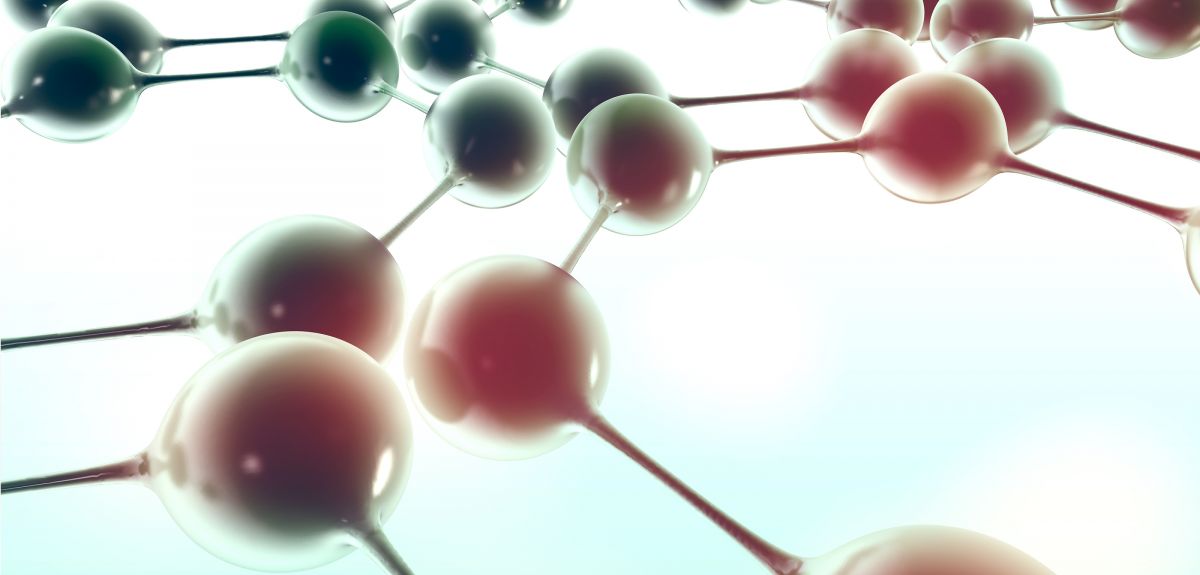
Image credit: Shutterstock
Proteins, assemble! Study sheds new light on our 'biochemical workhorses'
Proteins in cells underpin many of our most important functions, from muscle contraction to breaking down food. In a new study published in the journal Science, researchers from the universities of Oxford and Massachusetts explore how these proteins assemble into the 'complexes' that allow them to perform their specific tasks. Two of the paper's authors, Professor Justin Benesch from Oxford's Department of Chemistry and Dr Georg Hochberg, formerly of Oxford and now of the University of Chicago, discuss the study's findings.
What are proteins, and what role do they play within organisms?
Proteins are the biochemical workhorses of cells. They make muscles contract, break down food, replicate genetic material, and underlie our senses. To perform these important functions, most proteins assemble into so-called complexes. A complex consists of several individual proteins chains that associate in a precise and stable geometrical arrangement.
What did we previously know about how proteins assemble and interact? What didn't we know?
Protein complexes are incredibly specific. Each cell contains thousands of different proteins, each of which is only part of a small number of complexes. So proteins have to be able to recognise their assembly partners with incredible fidelity, excluding from their assemblies the vast majority of other proteins. In general, proteins that interact to form a complex have three-dimensional structures that fit together tightly, with surfaces that display a high degree of shape and charge complementarity – that is, they fit together in both shape and with charges attracting rather than repelling each other.
But somehow many proteins also exclude other proteins from their complexes that have very similar shapes compared to their proper interaction partners. This happens because new protein complexes are often created by evolution through gene duplication, a kind of copy-paste mechanism in which two initially identical copies of a single ancestral complex are produced. Because their three-dimensional structures will be identical at first, the two copies initially always co-assemble into a complex together. But in many cases, they gradually 'forget' how to do this, and eventually only form two separate complexes – one containing only protein chains from the first copy, the other only chains from the second copy. Why proteins become selective in their assembly like this, as well as how they achieve it structurally, was completely unknown.
What did this research find?
We first found, by looking at many proteins from a variety of organisms, that proteins avoid co-assembling with the majority of their gene duplication copies and that this allows the two copies to carry out different biochemical functions. This means that 'forgetting' how to co-assemble with their gene duplication relatives is a key step in the evolution of novel biochemical functions.
We then worked out exactly how selective assembly is achieved structurally between two small heat-shock plant proteins that were created by gene duplication. Small heat-shock proteins protect other proteins from the dangerous effects of heat stress. Both proteins we studied assemble into complexes with only their own protein chains, but do co-assemble into complexes containing both kinds of chains.
To our great surprise, the two proteins had near-identical structures, with no clear sign of an absence of shape or charge complementarity that would prevent them from co-assembling. Instead, we found that evolution achieved selectivity in the most economical fashion, modifying only a minimal number contacts between the proteins, and exploiting very subtle differences in the way the two proteins deform as they assemble into their specific complexes. We could also show theoretically that such selectivity should be easier to achieve for complexes containing fewer protein chains, and that this has left a measurable imprint in the number of chains selective complexes actually contain in nature.
This was a highly collaborative piece of work, between biophysical chemists in Oxford and plant scientists at the University of Massachusetts, and required us to use a broad range of methods, from theoretical statistical mechanics, to computer simulations and experiments to determine the molecular structure of the proteins, to functional investigations on pea leaves.
What are the implications of this research?
Our results imply that a major rethink of the determinants of molecular selectivity in proteins is required, away from simple shape and charge complementarity. In addition, our data has demonstrated the selectivity in assembly of small heat-shock proteins is an important part of their function, and may give us new opportunities in developing more thermally resistant plants.